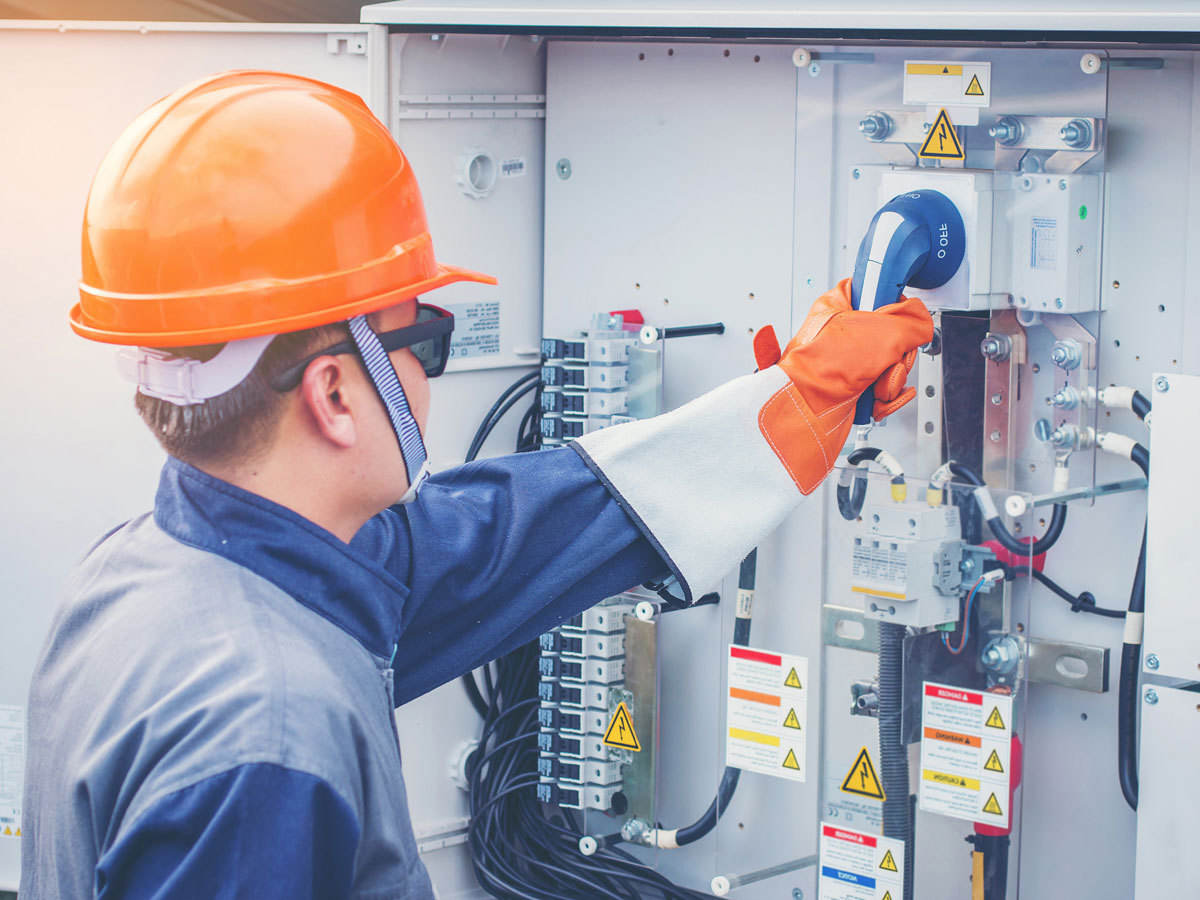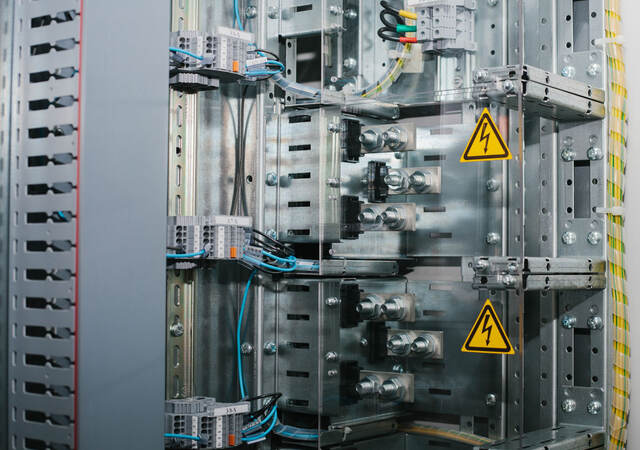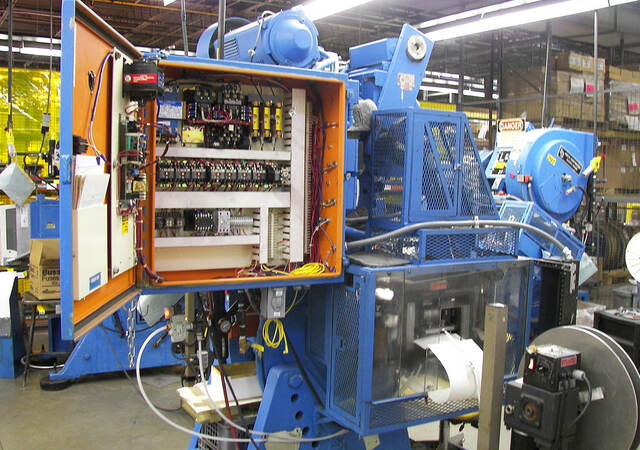To help you learn more about the revised requirements to machine supply circuit and disconnecting means in Chapter 5 of the 2021 edition of the NFPA 79, UL Solutions and Eaton Bussmann division experts have teamed up to provide answers to the following frequently asked questions from our related webinar.
Does the machine supply circuit disconnect have to be in a separate enclosure from the main control enclosure?
This is not required but is permitted per 5.1.9.6 Exception, provided it is not more than 20 feet away from the main control enclosure, the main control enclosure is marked to indicate the location of the machine supply circuit disconnecting means and the machine supply circuit disconnecting means is in sight of the main control enclosure, readily accessible and marked to indicate the equipment it disconnects. The practice of having a separately enclosed main disconnect is often preferred to help ensure that after the machine supply circuit disconnect is opened, the main control enclosure is completely deenergized.
Can a self-protected starter be used as the machine supply circuit disconnect?
A listed self-protected combination controller (starter) is permitted as the machine supply circuit disconnect only when the industrial machine consists of a single motor circuit. Most industrial machines consist of multiple motor and non-motor loads and as such the use of a listed self-protected starter would not be permitted as the machine supply circuit disconnect. This misapplication is something that can occur, especially with equipment designed based on the International Electrotechnical Commission (IEC) requirements.
Do excepted circuits have to have their own disconnecting means?
Yes. Excepted circuits are not disconnected by the machine supply circuit disconnect and as such must have a disconnecting means to remove power to the excepted circuits when needed per 5.1.13.2. The disconnect and components of an excepted circuit must be mounted in an enclosure adjacent or within the control enclosure containing the machine supply circuit disconnecting means.
Must the machine supply circuit disconnect have overcurrent protection?
No. Overcurrent protection is required per 7.2.1.1 but it does not have to be integral to the machine supply circuit disconnect. As such, it is not uncommon for the machine supply circuit disconnect to be a non-fused listed motor circuit horsepower (HP) rated switch or a listed molded case switch. In both cases, trailing branch circuit rated fuses in fuseholders are commonly applied on the load-side of the machine supply circuit disconnect to provide the required overcurrent protection for the industrial machine.
Where nonfused motor circuit HP rated switches are used, they are required to be a UL 98 non-fused disconnect, not a UL 508 manual motor controller. UL 98 is the Standard for Enclosed and Dead-Front Switches, and UL 508 is the Standard for Industrial Control Equipment. The manufacturer of the machine is not required to provide overcurrent protection for the supply conductors. However, the supplier of the electrical equipment is required to state on the installation diagram the data necessary for selecting the overcurrent protective device for the supply conductors per 7.2.2.
Why does a manual motor controller marked “suitable as motor disconnect” need to be connected on the load side of a branch circuit protective device?
A manual motor controller marked “suitable as motor disconnect” connected on the line side of a branch circuit protective device would be located in a feeder circuit. This device does not have the required creepage and clearance required for a device located in a feeder circuit. Manual motor controllers are evaluated as industrial control equipment and are only required to meet creepage and clearance for a device used in a branch circuit. A manual motor controller marked “suitable as motor disconnect” is simply a manual motor controller that has been additionally evaluated for use as a motor disconnect. No differences in construction exist between a controller that is marked versus one that is not.
Is there a maximum distance associated with the requirement that the disconnecting means be within sight of the part of the machine requiring disconnection?
Chapter 3 of the 2021 edition of the NFPA has a definition for the terms “In Sight From,” “Within Sight From,” and “Within Sight.” Although definitions are not allowed to include requirements, this definition specifies that the equipment is to be visible and not more than 50 feet from the disconnect.
Is the table of wire bending space for conductors coming straight into a terminal from outside the enclosure also applied to conductors with right angle bends before coming into a terminal?
The wire bending space table in Article 430 of the National Electrical Code® (NEC) covers both types of conductor installations at terminals. UL 508A, the Standard for Industrial Control Panels, also has only one wire bending space table for conductor installations at terminals and it is the same table in Article 430 of the NEC.
What is meant by back-feeding a disconnecting means?
Back-feeding is connecting the supply to the disconnecting means at what would otherwise be the load terminals. Back-fed means the supply can be connected at either end of the disconnecting means.
How do these new requirements relate to existing (old) machines? Does old machinery need to be brought up to the new code requirements? Are old machines "grandfathered" into the older requirements?
Older machines are not required to be compliant with the new requirements of the National Fire Protection Association (NFPA) 79, per Section 1.3.1 - this standard is not intended to be applied retroactively. However, if changes other than repairs are made to the equipment, then the changes must comply with the current requirements per Section 1.3.2 of NFPA 79. In addition, if older machinery is being relocated, then it could be considered a new installation in which the current requirements of NFPA 79 could be required by the user.
Is there a section in NFPA 79 addressing surge protection on the main disconnect to protect machine/personnel from a lightning strike?
Yes, there is a requirement in NFPA 79, Section 7.8.1 for safety circuits to be protected from the effects of overvoltages due to lightning or switching surges. That was covered in the overvoltage protection webinar that you can access here.
In section 5.1.9.2, how do you accomplish the legibly marked disconnect to indicate the equipment it disconnects? Do we need a big label showing machine layout and which devices it disconnects, or a layout in the owner’s manual showing machine layout and which areas are disconnected?
A marking is required on the panel. A reference to the equipment and/or circuit being supplied by the disconnect is all that is required for the marking. If a reference to the circuit is used, it needs to correlate with the wiring diagram for identification purposes.
Does orange apply to 24 volt direct current (VDC) wiring?
Orange is only permitted for excepted circuits per NFPA 79, unless permitted by one of the exceptions in 13.2.4.1. If the 24 VDC wiring is for an excepted circuit connected to the output of a power supply, then orange would be required (either as the color of the insulation or by color markers per 13.2.4.2.
A 480 volt (V), 3-phase supplied industrial control panel has a machine supply circuit disconnecting (MSCD) means and an onboard 480V/120V transformer. The transformer secondary powers a 24VDC power supply, with an uninterruptible power supply (UPS) battery. Does the 24 VDC UPS system require a separate MSCD means that is operable and accessible from outside the enclosure?
An additional disconnect is not required but permitted in this application. If a disconnect is supplied, it would not be required to be operable and accessible from the outside of the panel enclosure.
How is NFPA 79 enforced? Do all industrial control panels need to comply with NFPA 79?
NFPA 79 is not a state adopted standard like the NEC. As such, meeting the requirements of NFPA 79 is driven by the user of the industrial machinery or the local jurisdiction. Some jurisdictions require all equipment to be listed and labeled. Where not required per the NEC to be listed, such as industrial control panels and industrial machinery, jurisdictions may require evaluation by a testing laboratory or registered or licensed electrical engineer. Where the equipment in question falls under the definition of industrial machinery, the jurisdiction could require compliance with NFPA 79. Industrial control panels per the definition in the NEC do not include the controlled equipment and as such are not required to comply with NFPA 79.
At what point does an industrial control enclosure (UL 508A) become a machine?
- Most customers for material conveyance do not accept that the panel and the conveyance of the material is a machine. Thus, many customers may want to ignore some of the additional requirements in NFPA 79 that are not included in UL 508A. This can be a tricky question because it is not uncommon for the manufacturer of the industrial control panel to be different than the manufacturer of the industrial machinery. With regard to material conveyance, this was added to Annex C in the 2015 edition. Although the Annex is for informational purposes only, it does clarify that material conveyance is considered to be within the scope of NFPA 79, Material-Handling Machines. Examples of material-handling machines described in NFPA 79, C.5 are as follows:
- Industrial robots
- Transfer machines
- Sortation machines
- Conveyors and conveying machines
If you have two supplies, one from a UPS circuit supply and one from the main building supply, would you need to keep both incoming supply conductors separate?
Yes, as per 5.1.2. Each set of machine supply circuit conductors on the line side of the machine supply circuit disconnecting means shall be separated from all other internal conductors, including conductors of other circuits.
What colors are acceptable in 13.2.4?
Orange for excepted circuits per 13.2.4.1. Other colors are permitted for ungrounded conductors per 13.2.4.3:
- Black for ungrounded AC and DC power conductors
- Red for ungrounded AC control conductors
- Blue for ungrounded DC control conductors 13.2.4.4
Where the identification is other than as permitted in 13.2.4.3, the means of identification shall be permanently posted on the inside of the main electrical control panel enclosure in a visible location.
Does NFPA 79 apply to UL 508A?
UL 508A has a section in Part 2 that covers the electrical requirements for industrial control panels used for industrial machinery. The requirements in UL 508A may not cover all and the most current requirements for industrial machinery panels, and as such, reference to NFPA 79 may be needed for additional requirements.
If you provide a cover over the line terminals, does that negate the need for arc flash personal protective equipment (PPE)?
No, it does not, it only provides electrical shock protection.
Is it true that NFPA 79 was implementing additions to the orange wiring for exception circuits, tracer colors being added to identify AC and DC exception circuit, and white/orange for current carrying neutrals?
Public inputs were offered to make these changes for the 2021 edition, but they were rejected by the committee. The only change made allows white with orange stripe for both the AC and DC grounded conductor that remains energized when the supply circuit disconnecting means is in the off position.
What is the rule for on/off of a circuit breaker (CB) handle?
The position for the disconnect handle is required to be on in the "up" position and off in the "down" position when mounted vertically per UL 508A 30.4.1 and NEC 240.81 (for circuit breakers) and 404.7 (for switches and circuit breakers mounted in enclosures). It is not directly stated in NFPA 79. No requirements exist for switches and circuit breakers operated horizontally.
Are there arc flash protection enclosures you can install inside of a larger enclosure to isolate arc flash hazards?
Arc flash resistant enclosures do exist. However, if you are trying to minimize the required arc flash PPE, the issue with having the machine supply circuit disconnect in the main control panel enclosure is that it cannot be used in the arc flash hazard analysis, since the fault could be on the line side of the machine supply circuit disconnect, in which case, the upstream overcurrent device would be used in the analysis.
The typical solution to this is not to install a smaller enclosure that contains the machine supply circuit disconnect into a larger enclosure, but rather have the machine supply circuit disconnect in a separate enclosure that supplies (and is attached to) the main control panel enclosure with the machine supply circuit disconnect operating handle installed on the main control panel enclosure. In this design, the main enclosure door cannot be opened until the machine supply circuit disconnect is opened and no energized parts are in the main control panel enclosure.




